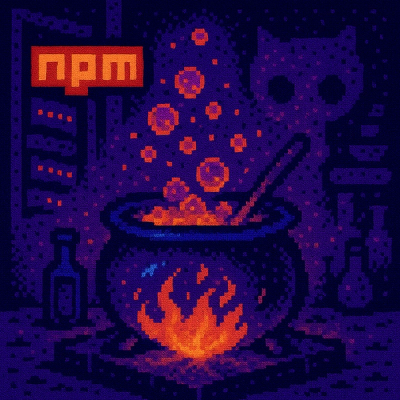
Security News
How Enterprise Security Is Adapting to AI-Accelerated Threats
Socket CTO Ahmad Nassri discusses why supply chain attacks now target developer machines and what AI means for the future of enterprise security.
notebookjs
Advanced tools
v0.4.2Notebook.js parses raw Jupyter/IPython notebooks, and lets you render them as HTML. See a working demo here.
Notebook.js works in the browser and in Node.js. Usage is fairly straightforward.
First, provide access to nb via a script tag:
<script src="notebook.js"></script>
Then parse, render, and (perhaps) append:
var notebook = nb.parse(raw_ipynb_json_string);
var rendered = notebook.render();
document.body.appendChild(rendered);
To install:
npm install notebookjs
Then parse, render, and write:
var fs = require ("fs");
var nb = require("notebookjs");
var ipynb = JSON.parse(fs.readFileSync("path/to/notebook.ipynb"));
var notebook = nb.parse(ipynb);
console.log(notebook.render().outerHTML);
By default, notebook.js supports marked for Markdown rendering, and ansi_up for ANSI-coloring. It does not, however, ship with those libraries, so you must <script>-include or require them before initializing notebook.js.
To support other Markdown or ANSI-coloring engines, set nb.markdown and/or nb.ansi to functions that accept raw text and return rendered text.
Notebook.js plays well with code-highlighting libraries. See NBPreview
for an example of how to add support for your preferred highlighter. However, if you wish to inject your own
highlighting, you can install a custom highlighter function by adding it under the highlighter name in an
notebookjs instance. For instance, here is an implementation which colorizes languages using
Prismjs during page generation for a static site:
var Prism = require('prismjs');
var highlighter = function(code, lang) {
if (typeof lang === 'undefined') lang = 'markup';
if (!Prism.languages.hasOwnProperty(lang)) {
try {
require('prismjs/components/prism-' + lang + '.js');
} catch (e) {
console.warn('** failed to load Prism lang: ' + lang);
Prism.languages[lang] = false;
}
}
return Prism.languages[lang] ? Prism.highlight(code, Prism.languages[lang]) : code;
};
var nb = require("notebookjs");
nb.highlighter = function(text, pre, code, lang) {
var language = lang || 'text';
pre.className = 'language-' + language;
if (typeof code != 'undefined') {
code.className = 'language-' + language;
}
return highlighter(text, language);
};
A highlighter function takes up to four arguments:
text -- text of the cell to highlightpre -- the DOM <pre> node that holds the cellcode -- the DOM <code> node that holds the cell (if undefined then text is not code)lang -- the language of the code in the cell (if undefined then text is not code)The function should at least return the original text value if it cannot perform any highlighting.
Notebook.js currently doesn't support all of MathJax's syntaxes (MathML, AsciiMath, LaTeX). In the browser, however, it does support a significant subset of LaTeX via KaTeX. To enable this functionality, the webpage must have the following JavaScript and CSS libraries (or their equivalents, from other sources) loaded:
https://cdnjs.cloudflare.com/ajax/libs/KaTeX/0.10.0/katex.min.jshttps://cdnjs.cloudflare.com/ajax/libs/KaTeX/0.10.0/katex.min.csshttps://cdnjs.cloudflare.com/ajax/libs/KaTeX/0.10.0/contrib/auto-render.min.jsThe HTML rendered by notebook.js (intentionally) does not contain any styling. But each key element has fairly straightfoward CSS classes that make styling your notebooks a cinch. See nbpreview's stylesheet for an example implementation.
Many thanks to the following users for catching bugs, fixing typos, and proposing useful features:
FAQs
Parse and render Jupyter/IPython notebooks.
We found that notebookjs demonstrated a not healthy version release cadence and project activity because the last version was released a year ago. It has 1 open source maintainer collaborating on the project.
Did you know?

Socket for GitHub automatically highlights issues in each pull request and monitors the health of all your open source dependencies. Discover the contents of your packages and block harmful activity before you install or update your dependencies.

Security News
Socket CTO Ahmad Nassri discusses why supply chain attacks now target developer machines and what AI means for the future of enterprise security.

Security News
Learn the essential steps every developer should take to stay secure on npm and reduce exposure to supply chain attacks.

Security News
Experts push back on new claims about AI-driven ransomware, warning that hype and sponsored research are distorting how the threat is understood.